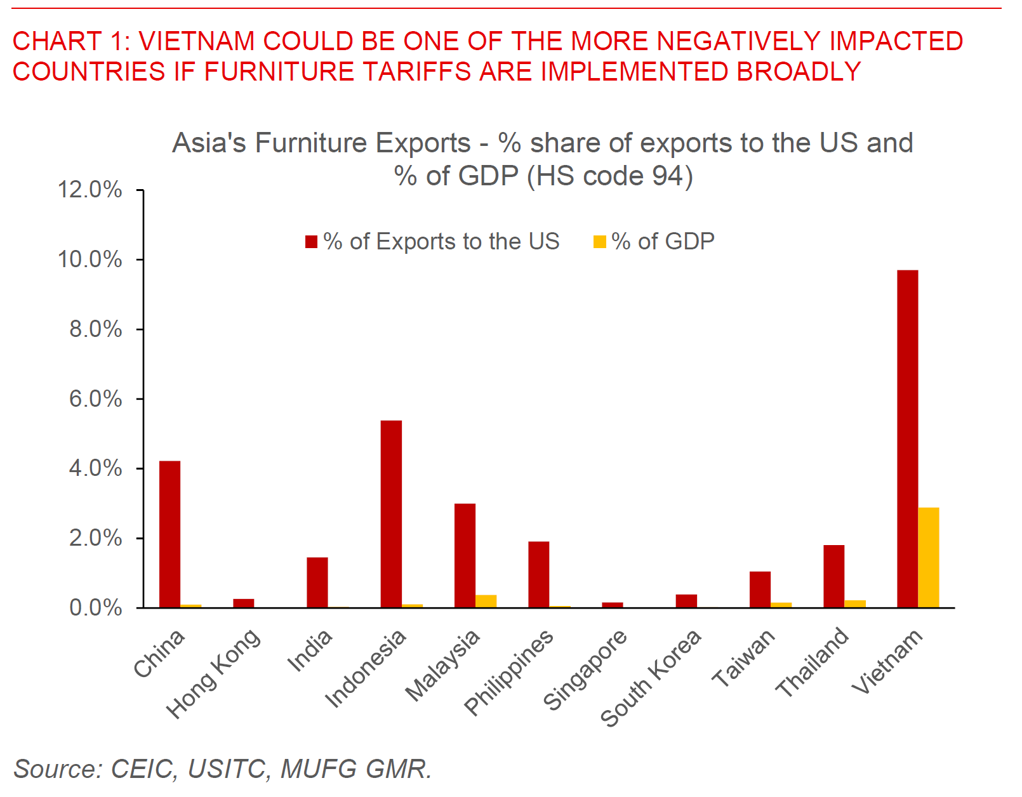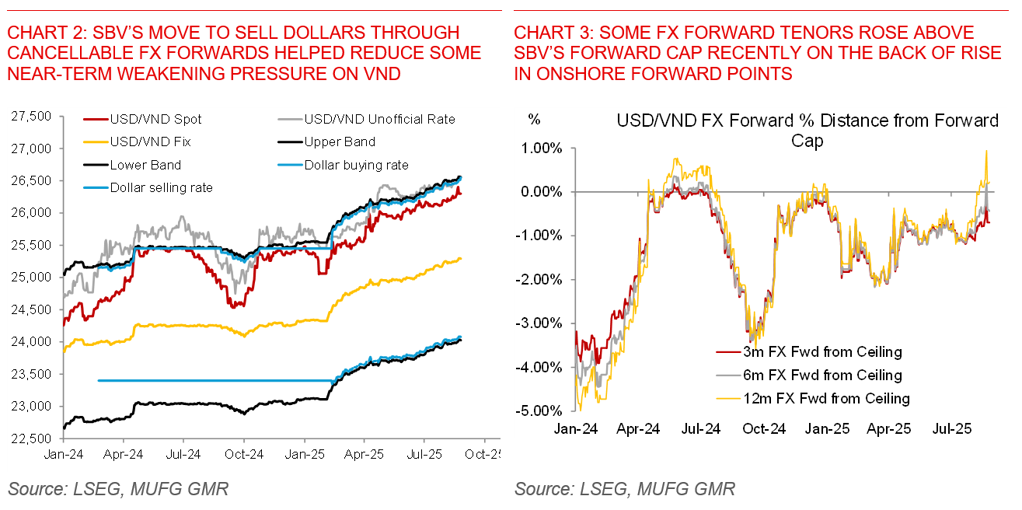Ahead Today
G3: US Consumer Confidence, US Durable Goods
Asia: Taiwan Industrial Production, Singapore Industrial Production
Market Highlights
Global FX markets gave back some of their Jackson Hole-induced gains with the US, although we note that broader risk sentiment together with the rates markets held up quite well, in what was a relatively quiet day with the UK out on holiday. In Asia, the big market driver regionally was a much stronger than expected USD/CNY fix by the PBOC, which together with USD/CNY falling to the 7.15 levels helped Asian currencies outperform G10 FX to some extent. As we headed into the Asia market open, the big news and mover was the announcement that President Trump has moved to remove Federal Reserve Governor Lisa Cook from her position, with the US dollar selling off and equities seeing some negative sentiment as we speak. It is unclear how much authority in practice Trump has to do so and the legal grounds on which this decision stands, but the broader theme of Fed independence erosion is certainly one weighing on the US Dollar as we speak.
Beyond these global market factors, we see three other drivers of Asia markets and currencies: 1) tariff announcements, 2) trade deal negotiations, and 3) FX intervention strategies.

First on tariff announcements, Trump announced over the weekend that the US is conducting a Section 232 tariff investigation on furniture over the weekend. The investigation is said to be completed within the next 50 days and furniture imports will be tariffed at an unspecified rate. A US official was also quoted by Bloomberg as saying that the probe was being carried out by the Commerce Department as part of its timber and lumber probe, of which several products are exempted from reciprocal tariffs right now. Overall for Asia, if these tariffs are just confined to wood and lumber exports to the US (HS codes 44), we think the impact is quite limited with maximum exposure at 1.8% of total exports (Indonesia’s case). Nonetheless, if tariffs broaden out to furniture (under HS code 94), Vietnam, and to a smaller extent China and Indonesia could be some of the more impacted economies. As an example, 10% of Vietnam’s exports to the US and more than 2% of Vietnam’s GDP comes from furniture exports to the US. In addition, the US is an important end-demand market for Vietnam’s furniture exports, with exports to the US making up close to 80% of Vietnam’s total furniture exports. Nonetheless, we note Vietnam is also a key source of furniture for the US, being one of the top import sources along with China and Mexico, and so ultimately this could give some pricing power to Vietnam’s exporters. Beyond furniture tariffs, we could also get better clarity on whether India will be hit with 50% tariffs and also potentially more details on transshipment tariffs later this week.
Second, on trade negotiations and trade deals. President Trump’s meeting with South Korea President Lee Jae Myung seems to have gone well, even as there were some initial jitters around social media posts before the actual event. President Lee’s charm offensive, backed by pledges to support American shipbuilding and a host of corporate investments seems to have left Trump satisfied, although South Korea did not get any changes to improve its trade deal. Trump lauded the quality of South Korea’s shipbuilding industry and expressed support for Korean plans to invest in US shipyards. Meanwhile, Trump refrained from direct demands for defence and cost sharing issues, while also saying that both sides had agreed to additional details of the trade framework announced on 31 July. Overall, the key theme across countries is still that implementing trade deals is more difficult than agreeing.
Last but not least, FX intervention strategies by Asian central banks. Various news outlooks including the Business Times and LSEG reported that the State Bank of Vietnam has intervened in the FX market via so-called “cancellable forwards” to help to stabilize Vietnam Dong weakness. This policy move has SBV selling Dollars in the forward market, but in a twist gives commercial banks the option to cancel the contract (potentially multiple times) if market conditions are not favourable. In a way, this is akin to a free put option on Vietnam Dong given to banks by SBV.
For SBV, there are a couple of benefits of using this tool. First, it does not immediately result in an outright selling of US dollars by the central bank. This is useful for SBV as its FX reserves holdings at around US$80bn is not a very sizeable ammunition to defend against VND weakness given that it is only less than three months worth of imports. Second, it also allows SBV to sell its US dollars only when VND weakness has gone past a certain threshold, and as such save the central bank’s ammunition for when it is most needed. Presumably banks with the right to cancel the contract will likely do so if VND strengthens over the next six months, and will only “exercise” the contract if VND weakens sharply. Third, it also potentially reduces spot demand for USD and thereby reduces one-way weakening expectations for Vietnam Dong.
So far the moves by SBV seemed to have helped in the near-term with spot USD/VND FX rates coming down to the 26,300 handle from 26,400 previously before the announcement. We view these latest moves by SBV to sell Dollars through cancellable forwards as slowing the pace of VND depreciation, but we think it is unlikely to change the path and direction. Nor do we think it is the intent of SBV to do so given that it has signalled so far this year that it is comfortable with gradual VND depreciation. Net-net, we still view the path of least resistance for USD/VND to continue weakening modestly into 2026, implying continued underperformance against G10 and Asian currencies. We are forecasting USD/VND at 26,500 by end 2025 and 26,900 by end 2026, with SBV keeping rates on hold through 2026 and some near-term upward pressure on interbank rates.

